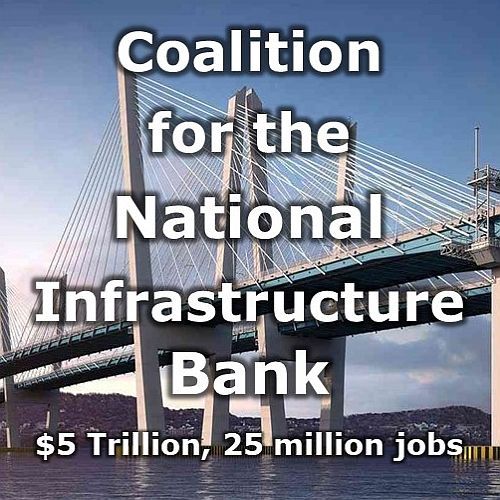How the National Infrastructure Bank Is Funded
The NIB will be a mixed-ownership public corporation that operates alongside the budget to finance needed infrastructure. Because it is a self-sustaining bank, it requires no Federal funding from the budget. It is large enough at $5 trillion, to finance projects in every single Congressional district that are not now covered under the Bipartisan Infrastructure Law (BIL). For a complete writeup, see: https://www.jcip1.org/national-infrastructure-bank-a-permanent-solution-and-timely-budget-workaround.html
Here is the quick version of how it is funded:
Q: How is the National Infrastructure Bank (NIB) capitalized?
A: This NIB will be capitalized by buying up to $500 billion in Treasury Securities from the private sector, exchanged for an equivalent of Preferred Stock in the NIB. Treasury purchases would be phased over time, as the NIB’s loan portfolio grows to $5 trillion, to maintain a ratio of $1 in capital to $10 in loans. Therefore, no appropriation is needed from the Federal budget to capitalize the NIB.
Preferred Stock would pay a 2% per year premium above the Treasury interest rate, to entice the investments. The premium payment, roughly $10 billion per year, would come out of the NIB’s interest earned on its loans (possibly $400 billion per year). Capital would be "saved" on the NIB’s books as a rainy day fund in case the economy or some loans go bad.

Q: Exactly where does the money come from that the NIB gives out in loans?
A: The NIB operates just like a commercial bank (uses the same accounting software) when giving out a loan. Each time the NIB creates and books a loan on one side of its books, it creates an offsetting deposit on the other side of its books (see How the NIB Makes and Creates Money). That accounting process adds to the nation’s money supply. Ninety-five percent of America’s money supply was created by commercial banks in this same loan process. Then the NIB uses cash on hand coming in from other deposits or loan repayments to circulate money from the newly created deposit into the rest of the banking system.

